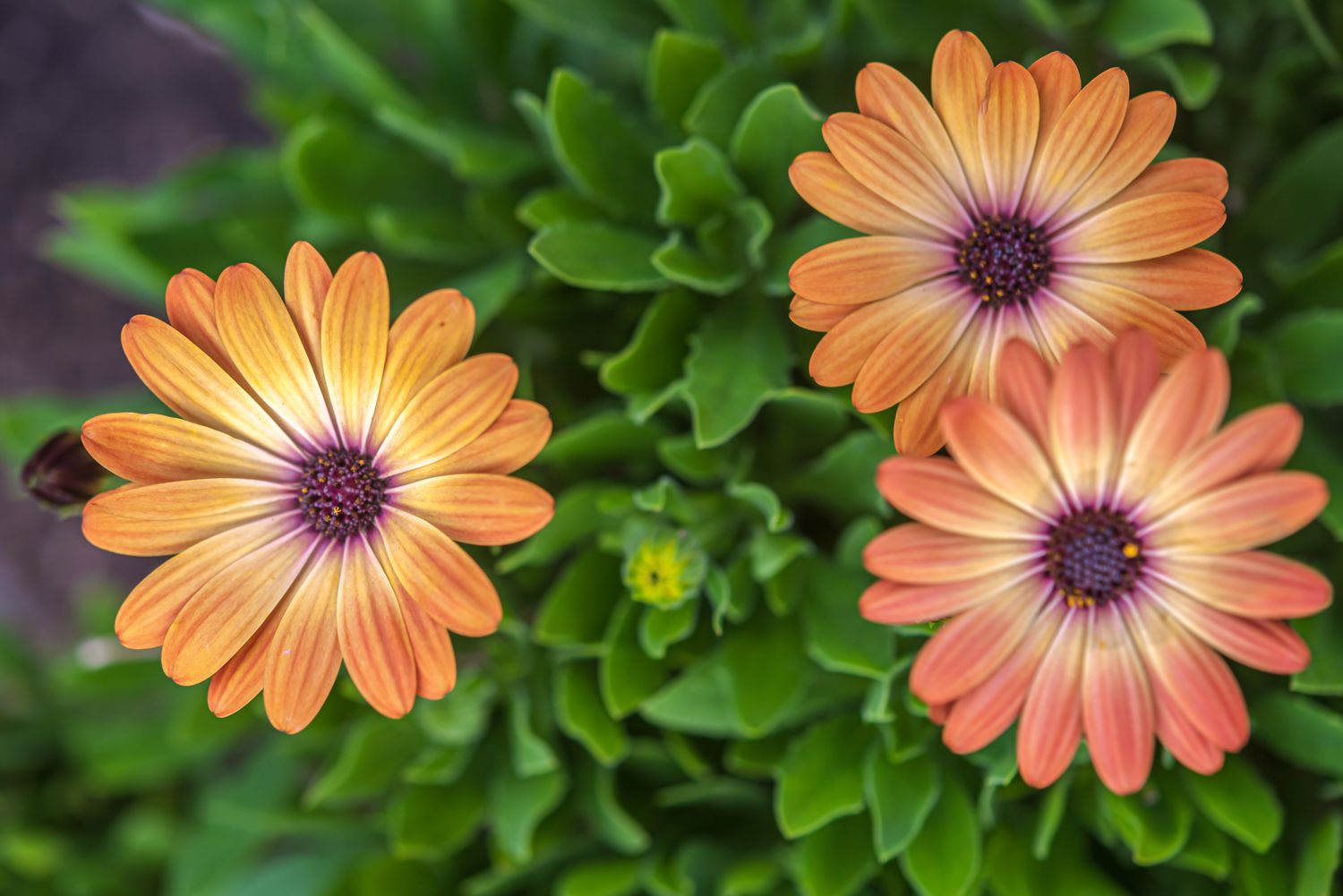
Osteospermum, commonly known as African daisies or Cape daisies, are captivating flowering plants renowned for their vibrant colors and striking beauty. With their delicate petals and unique patterns, these enigmatic flowers have captured the hearts of many gardeners and plant enthusiasts around the world.
In this article, we will explore 17 fascinating facts about Osteospermum, delving into their origins, characteristics, and surprising features. From their historical significance to their ecological role, there is so much to discover about these mesmerizing blooms. So, let’s dive in and unravel the mysteries behind Osteospermum!
Key Takeaways:
- Osteospermum, also known as African daisies, are vibrant, low-maintenance plants native to South Africa. They attract butterflies, bees, and hummingbirds, adding color and life to gardens.
- With its colorful flowers and unique texture, Osteospermum is a symbol of hope and encouragement. It can be easily grown in containers and is deer-resistant, making it a versatile and resilient plant for any garden.
The Name Osteospermum Comes from Greek
The word “Osteospermum” is derived from the Greek words “osteo” meaning bone and “spermum” meaning seed, referring to the shape of the seed resembling a small bone.
Osteospermum is Native to South Africa
The plant is indigenous to South Africa and thrives in the sunny and arid regions of the country.
Osteospermum Has Vibrant Flower Colors
Osteospermum comes in a wide array of vibrant colors including purple, pink, orange, yellow, and white, making it a popular choice for gardeners and florists.
Osteospermum Blooms in Spring and Summer
The plant produces beautiful blooms from spring to summer, adding a splash of color to gardens and landscapes.
Osteospermum Attracts Butterflies and Bees
The colorful flowers of Osteospermum are highly attractive to butterflies and bees, making them beneficial plants for pollinators.
Osteospermum Requires Well-Drained Soil
These plants prefer well-drained soil and are intolerant of waterlogged conditions.
Osteospermum Can Tolerate Drought
Once established, Osteospermum can tolerate periods of drought, making them a low-maintenance choice for gardeners.
Osteospermum Belongs to the Asteraceae Family
Osteospermum is a member of the Asteraceae family, which includes daisies, asters, and sunflowers.
Osteospermum Can be Grown as Annuals or Perennials
Depending on the climate, Osteospermum can be grown as annuals or perennials. In colder regions, they are often cultivated as annuals.
Osteospermum Has Long-Lasting Flowers
The flowers of Osteospermum have a long-lasting bloom period, providing continuous color throughout the season.
Osteospermum is Used in Traditional Medicine
In certain cultures, Osteospermum has been used for medicinal purposes, particularly in the treatment of digestive disorders and skin ailments.
Osteospermum is Deer Resistant
Due to its strong fragrance, Osteospermum is less likely to be damaged by deer and other wildlife.
Osteospermum is a Symbol of Hope
In Victorian flower language, Osteospermum is associated with hope and encouragement, making it a popular choice for bouquets and arrangements.
Osteospermum Can be Propagated by Cuttings
Osteospermum can be easily propagated by taking stem cuttings and rooting them in a well-draining medium.
Osteospermum is a Popular Container Plant
Due to its compact and trailing growth habit, Osteospermum is commonly cultivated in containers and hanging baskets.
Osteospermum is Attractive to Hummingbirds
The nectar-rich flowers of Osteospermum are known to attract hummingbirds, adding extra beauty and activity to your garden.
Osteospermum Adds Texture to Flower Beds
With its unique daisy-like flowers and finely textured foliage, Osteospermum can add visual interest and texture to flower beds and borders.
Conclusion
Osteospermum, commonly known as African daisies or daisy bushes, are truly fascinating plants. With their vibrant colors and unique features, they are a popular choice among gardeners and flower enthusiasts. From their origin in South Africa to their ability to attract butterflies and bees, there is so much to learn and appreciate about these delightful flowers.
Whether you are interested in growing Osteospermum in your garden or simply curious to know more about these enigmatic plants, this article has provided you with a comprehensive insight into their characteristics and cultivation. By following the tips and guidelines highlighted, you can enhance your gardening skills and successfully grow these beautiful flowers.
So why not embark on the journey of exploring the wonders of Osteospermum? With their striking appearance and captivating traits, they are sure to add a touch of beauty and elegance to any garden or floral arrangement.
FAQs
Q: How often should I water my Osteospermum plants?
A: Osteospermum plants prefer well-drained soil, so it is important not to over-water them. It is recommended to water them thoroughly when the top inch of soil feels dry, usually about once every 7-10 days.
Q: Can Osteospermum plants tolerate cold temperatures?
A: Osteospermum plants are sensitive to frost and cannot tolerate cold temperatures below 50°F (10°C). Therefore, they are best grown as annuals in colder climates or as perennials in regions with mild winters.
Q: How do I deadhead Osteospermum flowers?
A: To deadhead Osteospermum flowers, simply pinch or cut off the faded flower heads. This encourages the plant to produce more blooms and prevents it from diverting energy into seed production.
Q: Can I grow Osteospermum in containers?
A: Yes, Osteospermum is well-suited for container gardening. Choose a container with good drainage and plant them in well-draining potting soil. Ensure they receive adequate sunlight and water them regularly.
Q: Are Osteospermum plants attractive to pollinators?
A: Osteospermum plants are known for attracting bees and butterflies with their nectar-rich flowers. They can play a vital role in supporting pollinator populations in your garden, making them a valuable addition for biodiversity.
Osteospermum's enigmatic qualities captivate gardeners worldwide. Vibrant blooms, drought tolerance, and medicinal uses make this South African native a true wonder. Unravel more mindblowing Osteospermum facts, surprising African daisy insights, and other fascinating plant mysteries that will leave you in awe.
Was this page helpful?
Our commitment to delivering trustworthy and engaging content is at the heart of what we do. Each fact on our site is contributed by real users like you, bringing a wealth of diverse insights and information. To ensure the highest standards of accuracy and reliability, our dedicated editors meticulously review each submission. This process guarantees that the facts we share are not only fascinating but also credible. Trust in our commitment to quality and authenticity as you explore and learn with us.


